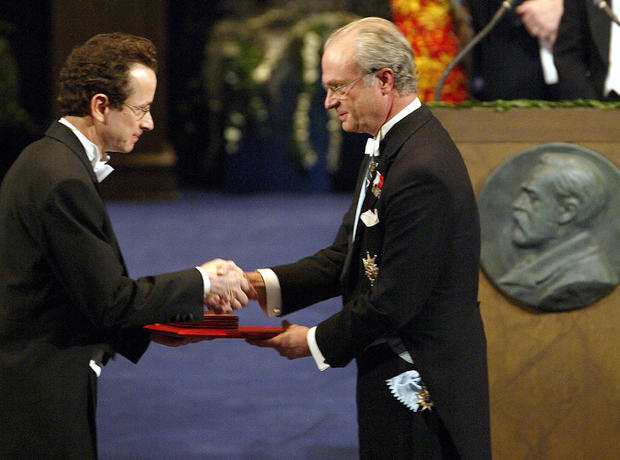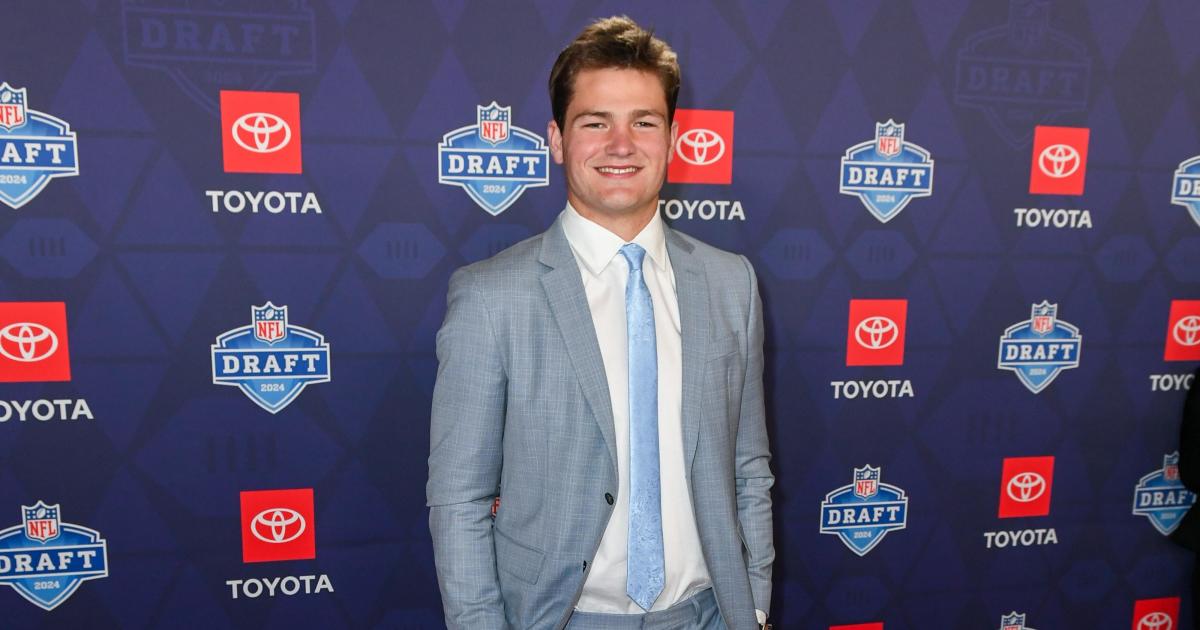Nobel Prize Winner For Chemistry Debunks Science In Wells Report
BOSTON (CBS) - As predicted, the New England Patriots will not go silently into the night after their integrity was called into question for the deflation of footballs in the AFC Championship Game played on January 18, 2015 in Foxboro.
Ted Wells, the investigator hired by the NFL, determined that two Patriots employees, locker room attendant Jim McNally and equipment assistant John Jastremski, were "more than likely" involved in a scheme to deflate footballs, and that quarterback Tom Brady was "generally" aware of their activity.
For this, New England was fined $1 million and docked two draft picks by the league, and Brady was issued a four-game suspension.
On Thursday morning the Patriots fired back by launching a website called WellsReportContext.com, which serves as a rebuttal that denied many of Wells' conclusions.
In one section of the website, we learn from 2003 Nobel Prize winner Roderick MacKinnon that the science in the Wells Report is insufficient. We already knew about Exponent's past controversial findings, but the Rockefeller University professor really lays it out for you why, based on his expertise, the data is inconclusive.
From WellsReportContext.com:
Roderick MacKinnon is a professer at The Rockefeller University. In 2003 he was awarded the Nobel Prize in chemistry. His other awards include the 2003 Louisa Gross Horwitz Prize, the 2001 Gairdner Foundation International Award, the 2001 Perl-UNC Neuroscience Prize, the 2000 Lewis S. Rosenstiel Award for Distinguished Work in Basic Medical Science and the 1999 Albert Lasker Basic Medical Research Award.
Professor MacKinnon has no business or personal relationship with the Patriots. When news of the investigation became public, he offered his scientific expertise to the team.
The Wells report concluded "within the range of likely game conditions and circumstances studied, they could identify no set of credible environmental or physical factors that completely accounts for the Patriots halftime measurements or for the additional loss in air pressure exhibited by the Patriots game balls, as compared to the loss in air pressure exhibited by the Colts game balls". I do not agree with this conclusion. Let me explain why.
The major uncertainty in the Wells Report scientific analysis lies in the pregame measurement of ball pressures: there were two gauges that differ by approximately 0.4 psi, it is not certain which was used in the pregame measurement, and the data were not recorded. If the pregame measurement of Patriots balls was made with the gauge that gives the higher number (high gauge) – as was the Official's best recollection – then when you compare the Patriots ball pressures at halftime using the same gauge, you observe that the average Patriots ball pressure drop (1.0 psi) falls precisely in the range predicted by the Ideal Gas Law (1.0 to 1.2 psi) for the temperature differences the balls were thought to experience on game day. In more detail, 8 out of 11 Patriots balls fall within that predicted range, and the three with a larger drop (by 0.1, 0.3 and 0.4 psi) can be explained by measurement error (see below). Further, if the pregame measurements for Colts balls were made with the other (low) gauge then the Colts balls dropped 0.7 psi (only 4 Colts balls were measured at halftime). The smaller drop by 0.3 psi of the Colts balls can have a scientific explanation – they were measured at halftime after the 11 Patriots balls and thus had more time to warm up and increase pressure. Is it possible that the same Official could use one gauge for the Patriots and the other for the Colts measurements? Not only is this possible but it is exactly what happened at halftime. The Wells Report describes a detailed procedure in which each Official used one gauge to measure pressures of 11 Patriots balls first then 4 Colts balls. Only on subsequent data analysis did it become evident that the gauges were inadvertently switched in between measuring the team balls. It is very easy to understand how this could happen because the gauges look almost identical. This could also have occurred for the pregame measurements because the Official who made those measurements owned both gauges and brought them to the stadium. Imagine the Official has a bunch of balls from each of two teams that he has to measure and two gauges that are almost identical, so much so that they were interchanged during the rigid protocol of recording described for halftime.
Why then did the Wells Report state that "Most of the individual Patriots measurements recorded at halftime, however, were lower than the range predicted by the Ideal Gas Law"? This statement assumes that the pregame measurements on Patriots balls were made with the low gauge. Why was this assumption made? The main argument as best I can follow goes like this. Science consultants for the Wells Report tested a lot of gauges and found that the low gauge was more similar to other gauges. Because the pregame measurements as recollected by the Official agreed with the pressures pre-set by each team with their own gauges, it seemed more likely that the low gauge was used. Here is my concern about that argument. The accuracy and precision of numbers recollected do not match that of data recorded. The recollected (i.e. not recorded) pressures for Patriots pregame measurements is "most of the Patriots footballs measured at 12.5 pounds per square inch-gauge (psig), though there may have been one or two that measured at 12.6 psig." This means that the Patriots gauge and the Official's pre-game gauge were right on (and similarly for the Colts gauge). This level of precision and accuracy in recollected numbers seems unlikely if you look at data that were actually recorded in writing. Let me give two examples. First, take the ball intercepted by the Colts. The pressure was measured three times on this same ball and the numbers are 11.35, 11.45 and 11.75 psi. As anyone can see, these values vary quite a bit. Second, the Ideal Gas Law predicts that pressure should systematically increase over time when the balls were brought from the cold field to the warm locker room at halftime, as pointed out in the Wells Report. However, I do not see this systematic change in the sequential measurements of 11 Patriots balls and 4 Colts balls. The pressure in each ball must increase as it warms, but the systematic trend within the data this would produce is apparently obscured by a large measurement error – the kind of measurement error you see in the example of the ball intercepted by the Colts, a case in which the pressure was measured three times. For these reasons I do not think the assumption that the low gauge was used for pregame measurement of Patriots balls is well supported. And as noted, it conflicts with the official's own best recollection.
In summary I believe the data available on ball pressures can be explained on the basis of physical law, without manipulation. The scientific analysis in the Wells Report was a good attempt to seek the truth, however, it was based on data that are simply insufficient. In experimental science to reach a meaningful conclusion we make measurements multiple times under well-defined physical conditions. This is how we deal with the error or 'spread' of measured values. In the pressure measurements physical conditions were not very well-defined and major uncertainties, such as which gauge was used in pre-game measurements, affect conclusions. Finally, the claim of a statistically significant difference in pressure drop between the two team balls regardless of which gauge was used did not account for the fact that the Colts balls were apparently measured at the end of halftime since the officials ran out of time and made only four measurements – in other words, the Colts balls were measured after the Patriots balls and had warmed up more. For the above reasons, the Wells Report conclusion that physical law cannot explain the pressures is incorrect.
Roderick MacKinnon
Professor, Nobel Laureate Chemistry
Tom Brady is expected to appeal his suspension from the NFL sometime on Thursday, and with the hiring of high-powered attorney Jeffrey Kessler, there's a good chance the future Hall of Famer gets his punishment reduced.




